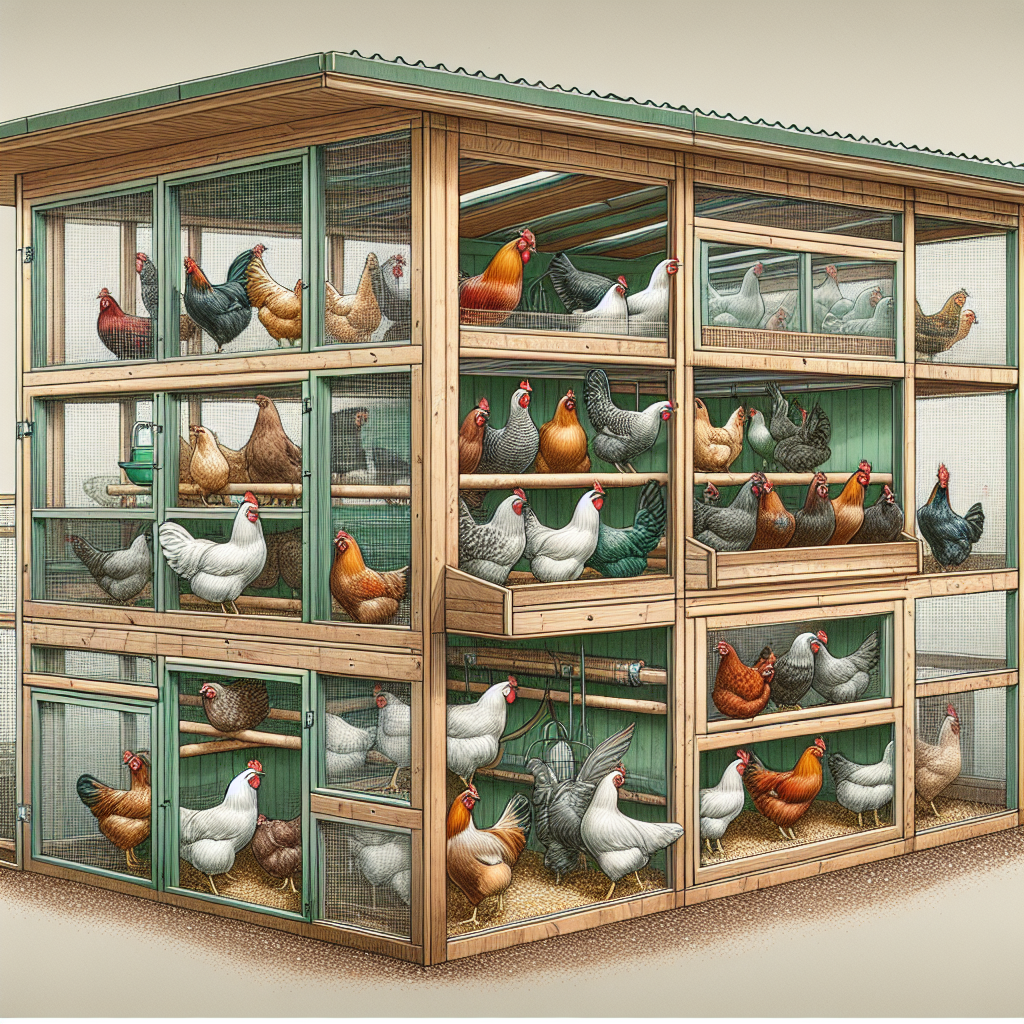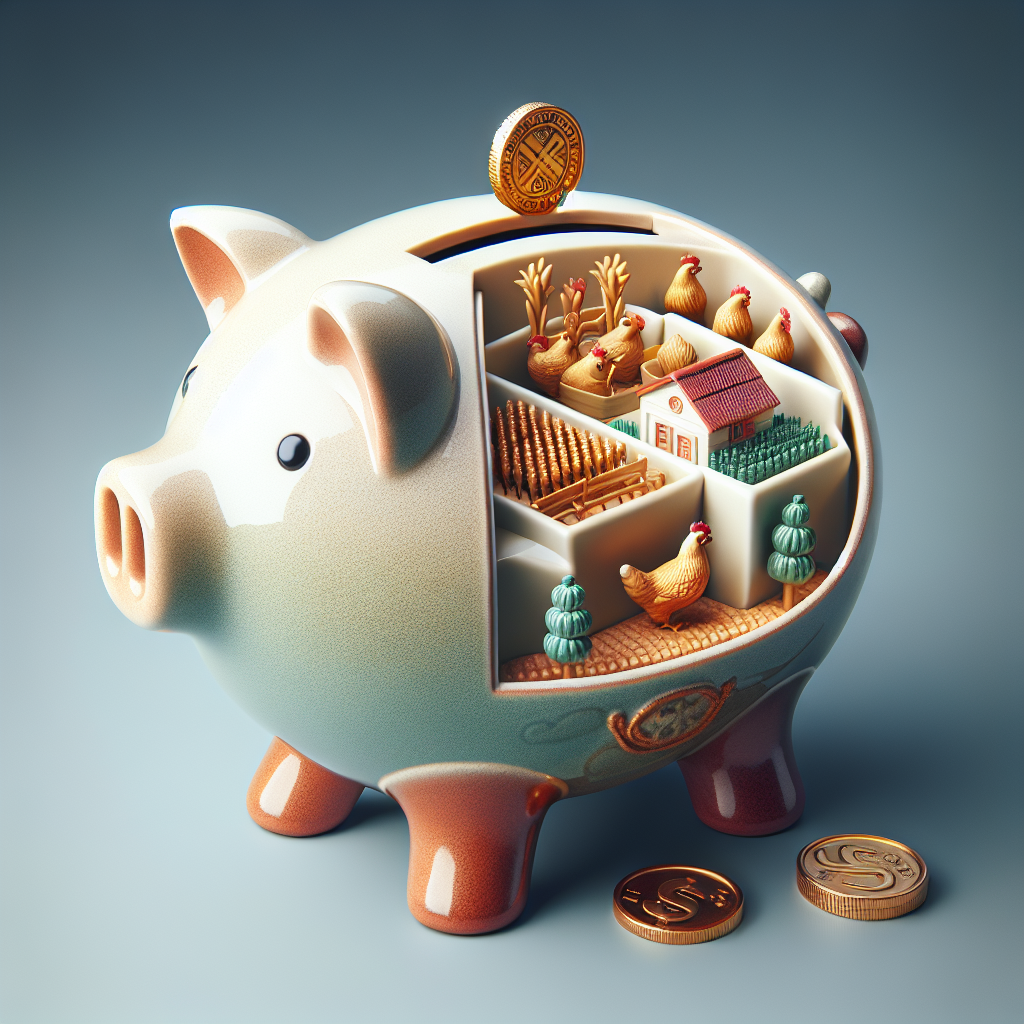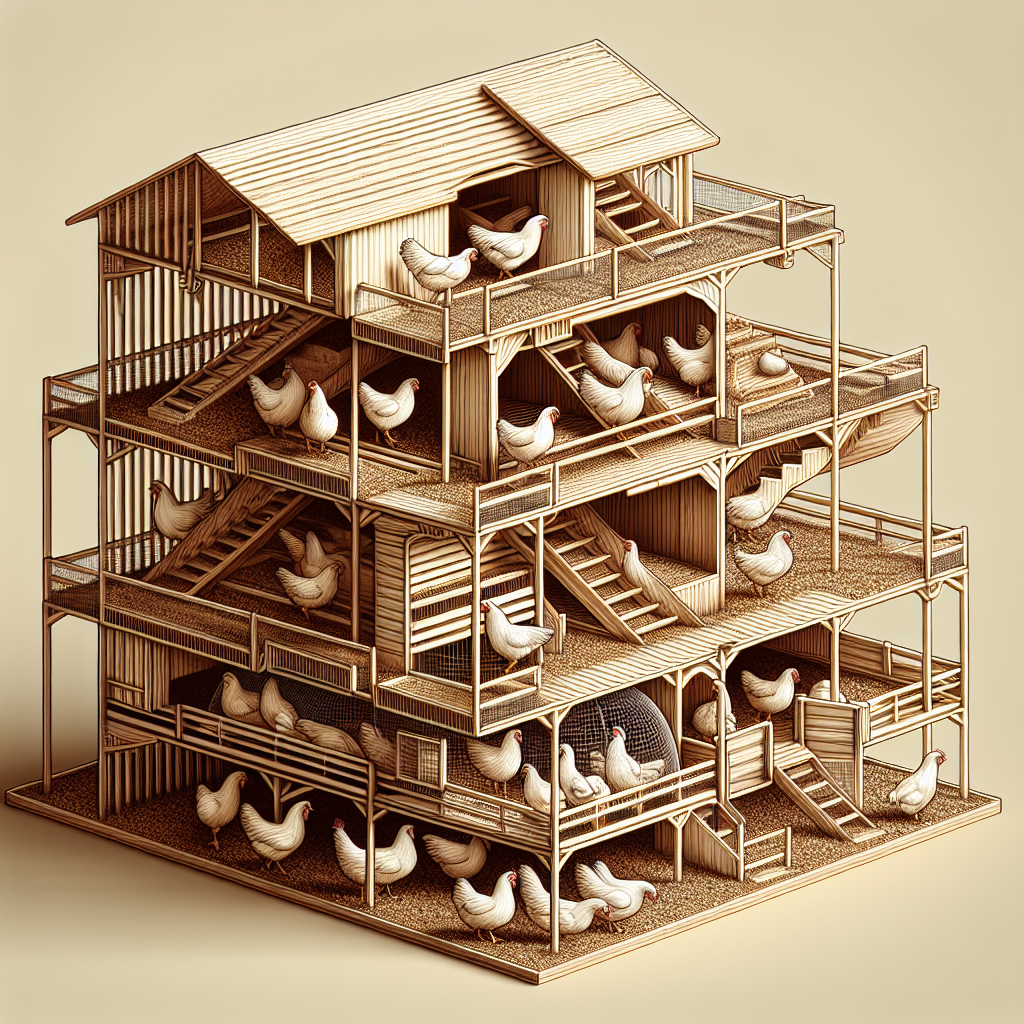In the world of chicken coops, have you ever wondered if there are designs that are both eco-friendly and sustainable, while also offering significant environmental benefits? With an increasing consciousness towards protecting our planet, this article explores the various possibilities when it comes to creating coop designs that not only provide a safe and comfortable home for our feathered friends but also minimize our ecological footprint. From utilizing recycled materials to incorporating renewable energy sources, discover the innovative ways in which chicken coop designs are evolving to make a positive impact on the environment.
Benefits of Eco-friendly and Sustainable Coop Designs
Eco-friendly and sustainable coop designs offer a range of benefits that not only contribute to a healthier and more sustainable environment but also enhance the overall well-being of poultry farmers and their flocks. By taking into consideration the environmental impact of coop designs, farmers can reduce their carbon footprint and contribute to the preservation of our planet for future generations.
Reduced Environmental Impact
One of the primary benefits of eco-friendly and sustainable coop designs is the reduced environmental impact. Traditional coop designs often consume excessive natural resources, such as electricity and water, and generate considerable waste. By implementing eco-friendly practices, farmers can minimize the negative impact their operations have on the environment.
Improved Air and Water Quality
Another significant advantage of eco-friendly coop designs is the improved air and water quality. Conventional poultry operations can generate pollutants that contribute to air pollution and contaminate local water sources. By incorporating sustainable practices, such as proper waste management and natural ventilation, the release of harmful pollutants can be significantly reduced, resulting in cleaner air and water.
Conservation of Natural Resources
Conservation of natural resources is a crucial aspect of eco-friendly and sustainable coop designs. By implementing energy-efficient techniques and utilizing renewable resources, farmers can minimize their reliance on non-renewable energy sources and conserve valuable resources. This helps reduce the overall ecological footprint of poultry farming and promotes a more sustainable approach to agriculture.
Mitigation of Climate Change
Eco-friendly coop designs also play an essential role in mitigating climate change. The poultry industry contributes to greenhouse gas emissions, which are major drivers of climate change. By adopting sustainable coop designs that prioritize energy efficiency and minimize waste, farmers can help combat climate change by reducing their carbon emissions and promoting a more sustainable agricultural system.
Key Elements of Eco-friendly and Sustainable Coop Designs
To achieve eco-friendly and sustainable coop designs, certain key elements should be considered. These elements not only promote environmental benefits but also aid farmers in optimizing their operations for maximum efficiency and profitability.
Energy Efficiency
Energy efficiency is a crucial element of eco-friendly coop designs. By incorporating energy-efficient lighting, heating, and ventilation systems, poultry farmers can significantly reduce their energy consumption. This not only helps conserve resources but also lowers energy costs, resulting in long-term savings for farmers.
Water Conservation
Water conservation is another important aspect of eco-friendly coop designs. Implementing systems such as rainwater harvesting and efficient water distribution systems can significantly reduce water usage and preserve this valuable resource. By utilizing water-efficient practices, farmers can minimize water waste and contribute to the sustainable management of water resources.
Waste Management
Proper waste management is essential in eco-friendly coop designs. By implementing systems for composting, recycling, and responsible disposal of waste, poultry farmers can minimize the environmental impact of their operations. By turning waste into valuable resources, such as nutrient-rich compost, farmers can create a closed-loop system that reduces the need for external inputs and promotes a sustainable cycle of resource utilization.
Natural Ventilation
Natural ventilation is a key element in eco-friendly coop designs. By incorporating design features that allow for adequate airflow, farmers can reduce the reliance on artificial ventilation systems, thereby saving energy and improving air quality. Natural ventilation can also enhance the overall comfort and well-being of the flock, leading to healthier and more productive chickens.
Solar Power Integration
By integrating solar power into coop designs, farmers can harness renewable energy and further reduce their reliance on non-renewable energy sources. Solar panels can be used to power lighting, heating, and ventilation systems, reducing energy costs and contributing to a more sustainable and environmentally friendly coop design.
Innovative Features for Eco-friendly Coop Designs
To further enhance the environmental benefits of coop designs, various innovative features can be incorporated into the design and construction process.
Living Roofs
Living roofs, also known as green roofs, are an innovative feature that can be incorporated into coop designs. These roofs are covered with vegetation, which not only provides insulation but also helps regulate temperature and manage stormwater runoff. Living roofs can improve air quality, reduce energy consumption, and provide a habitat for beneficial wildlife.
Rainwater Harvesting Systems
Rainwater harvesting systems are an effective way to collect and store rainwater for various uses within the coop. By capturing rainwater, farmers can reduce their reliance on municipal water supplies and conserve valuable resources. Rainwater can be used for cleaning, irrigation, and even drinking water for the flock, promoting water conservation and sustainability.
Vertical Farming Systems
Vertical farming systems are an innovative approach to maximize space and productivity within the coop. By utilizing vertical space, farmers can grow crops vertically, reducing the need for additional land and minimizing the environmental impact of agricultural practices. Vertical farming can provide fresh and nutritious food for the flock while maximizing resource efficiency.
Permaculture Practices
Permaculture practices involve designing agricultural systems that mimic natural ecosystems and promote sustainability. By incorporating permaculture principles, such as companion planting, agroforestry, and soil conservation techniques, farmers can create a balanced and self-sustaining ecosystem within the coop. This promotes biodiversity, reduces the need for external inputs, and increases the overall resilience of the farming system.
Examples of Eco-friendly and Sustainable Coop Designs
Several examples of eco-friendly and sustainable coop designs showcase the potential environmental benefits that can be achieved by implementing these designs.
Green Roof Chicken Coop
A green roof chicken coop is designed to incorporate living roofs, providing insulation, stormwater management, and improving air quality. By integrating vegetation into the coop design, farmers can create a more sustainable and environmentally friendly environment for their chickens.
Solar-Powered Coop
A solar-powered coop utilizes solar panels to generate electricity for various coop operations, such as lighting, heating, and ventilation. By harnessing renewable energy, poultry farmers can reduce their reliance on fossil fuels, lower energy costs, and contribute to a more sustainable energy future.
Recycled Materials Coop
A coop constructed using recycled materials helps reduce waste and minimize the environmental impact of the construction process. By repurposing materials such as wood, metal, or plastic, farmers can create a sustainable and eco-friendly coop design that showcases resource conservation and waste reduction.
Challenges and Considerations in Building Eco-friendly Coops
While there are numerous benefits to incorporating eco-friendly coop designs, there are also several challenges and considerations that farmers should keep in mind.
Cost Considerations
Building eco-friendly coops may require additional upfront costs compared to traditional coop designs. However, in the long run, farmers can benefit from reduced energy and water costs, making it a worthwhile investment. Careful planning and budgeting are essential to ensure that the additional costs of eco-friendly coop designs are manageable for farmers.
Climate and Location Factors
Climate and location play a significant role in determining the most appropriate eco-friendly coop design. Factors such as temperature, precipitation, and wind patterns should be considered when selecting energy-efficient systems, ventilation options, and suitable materials. Tailoring the coop design to the specific climate and location can optimize energy efficiency and enhance the overall sustainability of the coop.
Maintenance and Upkeep
Eco-friendly coop designs may require additional maintenance and upkeep compared to conventional designs. Systems such as rainwater harvesting, solar panels, or living roofs may require regular monitoring and maintenance to ensure optimal performance. While these additional tasks require time and effort, the long-term benefits of reduced resource consumption and improved environmental impact outweigh the maintenance requirements.
Benefits of Incorporating Eco-friendly Coop Designs for Poultry Farmers
Poultry farmers who incorporate eco-friendly coop designs can reap numerous benefits that contribute to their overall success and sustainability.
Cost Savings
One of the most significant benefits for poultry farmers is the potential for cost savings. By reducing energy and water consumption, farmers can lower their utility bills and operating costs. Additionally, implementing sustainable practices, such as waste management and natural ventilation, can minimize the need for external inputs, further reducing expenses and increasing profitability.
Healthier and Happier Chickens
Eco-friendly coop designs prioritize the well-being of the flock. By integrating natural ventilation, comfortable living spaces, and access to fresh air and sunlight, chickens can thrive in a healthier and less stressful environment. This, in turn, can lead to improved flock productivity, reduced disease incidence, and overall better welfare for the chickens.
Positive Public Image
Incorporating eco-friendly coop designs can also enhance a poultry farmer’s public image. Consumers are increasingly concerned about environmental sustainability and animal welfare, and supporting farmers who prioritize these values. By promoting their sustainable practices and eco-friendly coop designs, farmers can differentiate themselves from their competition and attract environmentally conscious consumers.
Access to Certification and Grant Programs
Farmers who implement eco-friendly coop designs may gain access to certification and grant programs that support sustainable agriculture. These programs often provide financial incentives, technical assistance, and marketing opportunities, further promoting the growth and sustainability of poultry farming operations. Being certified or recognized for eco-friendly practices can open doors to new markets and increase the visibility and reputation of the farm.
Conclusion
Incorporating eco-friendly and sustainable coop designs offers numerous benefits for poultry farmers and the environment alike. By reducing environmental impact, conserving natural resources, and mitigating climate change, farmers can contribute to a healthier and more sustainable planet. Key elements such as energy efficiency, water conservation, waste management, natural ventilation, and solar power integration are crucial in achieving eco-friendly coop designs. Innovative features like living roofs, rainwater harvesting systems, vertical farming, and permaculture practices can further enhance the environmental benefits of coop designs. While there are challenges and considerations in building eco-friendly coops, the cost savings, healthier chickens, positive public image, and access to certification and grant programs make it a worthwhile endeavor. By embracing eco-friendly coop designs, poultry farmers can foster a sustainable future for themselves, their businesses, and the planet.




